I never knew Chinchillas can be so adorable!
The Chinchilla('Little Chincha) is a crepuscular rodent, meaning it is an nocturnal animal. It lives in burrows or crevices in rocks in its native habitat and are agile jumpers which can jump up to 1.8m high.
Many of you think that rodents are despicable rats which live in garbage chutes and unlit back alleys. Squirrels, chipmunks, porcupines, beavers and guinea pigs are rodents too and they can be really cute! Chinchillas are one of those really adorable rodents as well!
 Photo taken from: http://www.flickr.com/photos/helmutgondim/3651372242/
Photo taken from: http://www.flickr.com/photos/helmutgondim/3651372242/
Native to the Andes which is a continual range of highlands along the western coast of South America, Chinchillas were once hunted for their dense, velvet-like fur by the Chincha people. Their fur are so soft and cosy, they feel like nothing but a ball of cotton wool!
FYI, the Chincha were a Native American people of Andes.
In the wild, they are being observed to eat fruits, plants, seeds and small animals. Nevertheless, this diet are for WILD chinchillas. For domestic Chinchillas, high quality, hay-based pellet and a constant supply of loose timothy hay will be more than sufficient. You may purchase from pet shops as they are common now, NOT rabbit/hamsters food.
Sweets and dried fruit treats should be limited to one per day, at the very most. Fresh vegetables and fruit (with high moisture content) should be avoided as these can cause bloat in a chinchilla. Nuts should be avoided due to their high fat content. High protein foods and alfalfa hay can cause liver problems.
Chinchillas have highly-sensitive bowel system so their diets MUST be specially taken care of.
Chinchillas require extensive exercise. They love to jump, move around so its best to buy bi-level or tri-level cage with shelves for sleeping and playing for them.
The chinchilla lacks the ability to sweat. Hence if the temperature get above 25°C, the chinchilla could easily get overheated and may suffer from heat stroke. Red ears signal overheating as chinchillas dissipate heat by routing blood to their large ears. Notice the fan that’s blowing into their cage. Audrey says that fan is switched on 24/7.
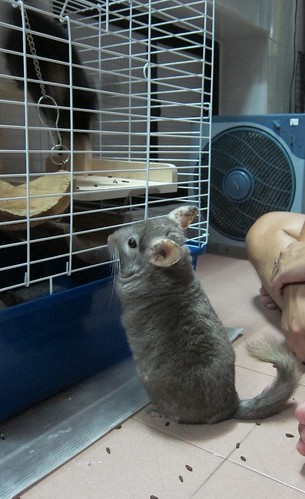 Photo description: Alice wishes to go home.
Photo description: Alice wishes to go home.
By instinct, they clean their fur by taking dust baths, in which they roll around in special chinchilla dust made of fine pumice. The chinchilla will roll around in this dust house vigorously. In the wild their dust is formed from fine ground volcanic rocks. The dust gets into their fur and absorbs oil and dirt. If you have a chinchilla or intend to buy one, a daily dust bath for your pet is a must.
DO NOT USE SOAP AND WATER TO BATH YOUR CHINCHILLA.
The reason is because of their fur is so thick and dense, it prevents air-drying, retaining moisture close to the skin. This moisture can cause fungus growth or their fur to rot. A wet chinchilla must be dried immediately with towels and a no-heat hair dryer(because they have to be kept cool).
Amazingly, their fur is so thick that it resists parasites such as fleas. If only Bubble has fur like that too! The fur also reduces loose dander, making chinchillas hypo-allergenic.
Unlike the hamsters, the gestation period of a Chinchilla is 111 days, longer than most rodents. Hence when chinchillas are born, they are fully furred and with eyes open. So no naked skin like my baby hamsters!
Let me introduce the 3 lady musketeers I met 2 weeks back. They belong to Audrey, my younger brother’s girlfriend. Each of them has their distinct trademark.
Dusk Dusk- The light elbony Chinchilla 
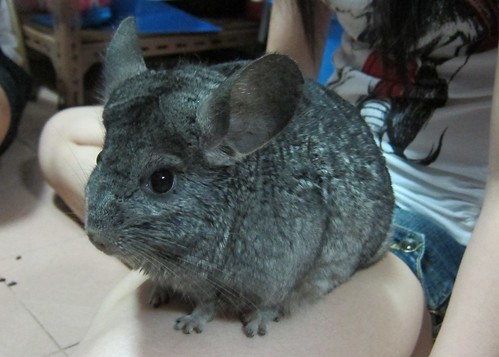
She’s adored for her special ability to stand on her hind legs without moving even an inch- on a container, on a small box, even to balance herself on someone’s thigh. She’ll pose in this position for you to take photographs for as long as you want with no sweat. Isn’t she a darling!
Shadow- Black Velvet + white bottom Chinchilla
Distinctively recognised by her piggy tail. She’s one of the rare chinchillas with a really curly piggy tail. And she’s so petite!
She’s my favourite for her colour.
Alice- Brown Velvet with violet carrier and red eyes
Her unique colour is already her trademark. This rare-coloured chinchilla can easily cost up to $2500. Audrey said that not many people really appreciates Alice because of her colour- it’s either you like it, or you don’t. The main reason why she’s my favourite is because she reminds me of Piglet from Winnie The Pooh!
I have an absolute great taste. My first visit to see them and I already adore the most expensive chinchilla without even knowing the price beforehand.
Until my next visit, I’ll be seeing them again, this time in their NEW, bigger house!
Pets are adorable and wonderful. They can be great friends. Nevertheless, only buy them if you can commit your time and love. Please DO NOT abandon your pets!
On a side note:
Look, I spotted 2 Mint Bears in Audrey’s room! Seems like they have lots of great company!
If you wish for a pet but have no time & commitment, perhaps go for soft toys like a Mint bear.
Reference of chinchillas taken from: http://en.wikipedia.org/wiki/Chinchilla , http://www.petinfo4u.com/chinchilla.htm

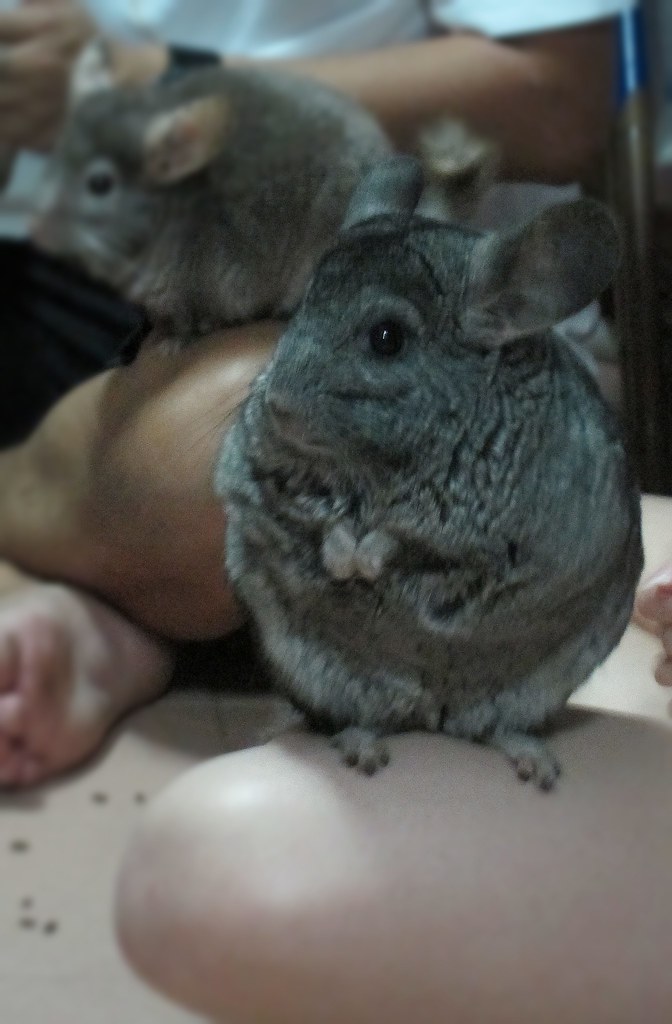
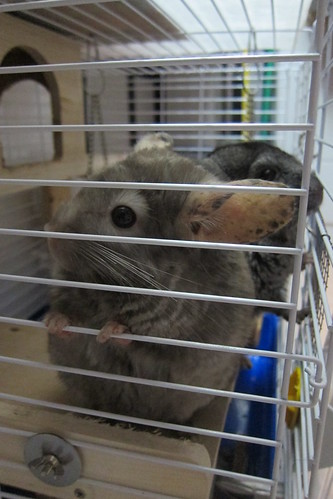

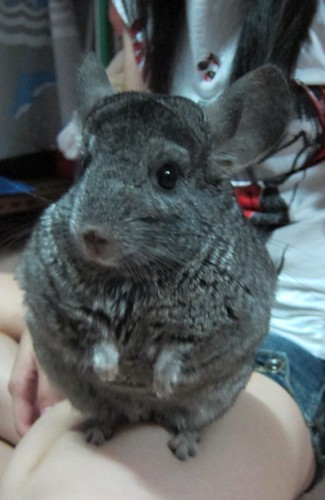

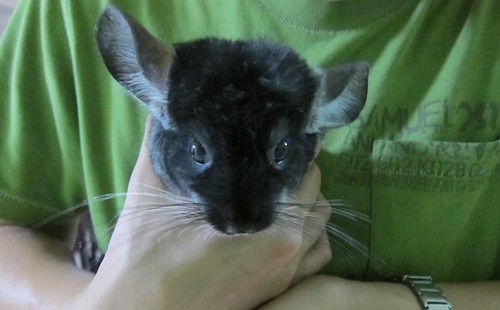
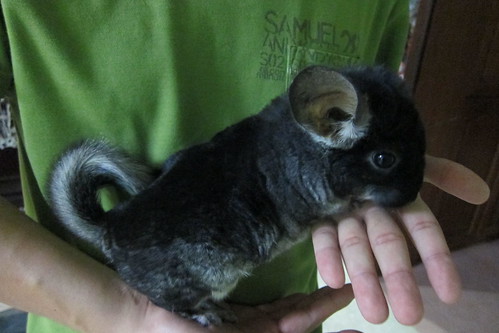
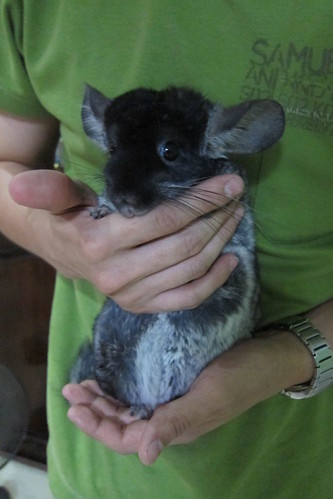
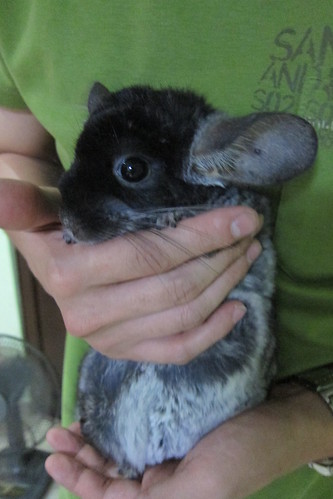

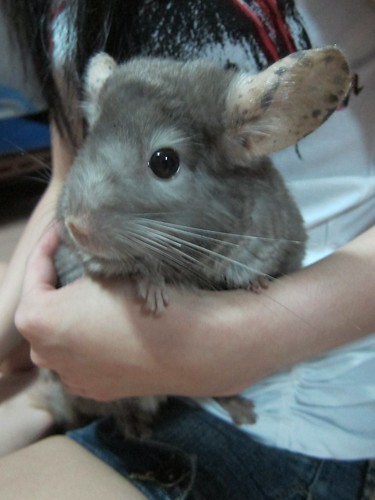
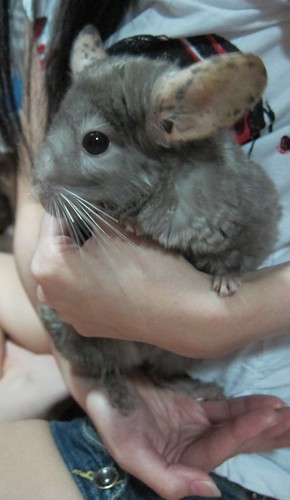


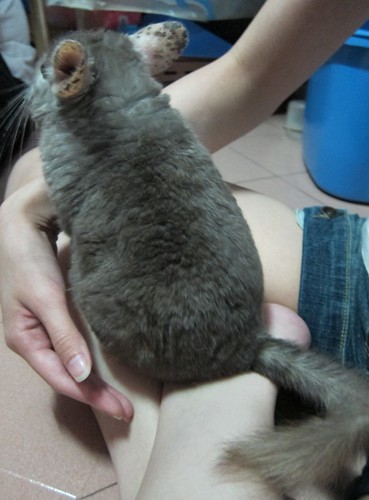
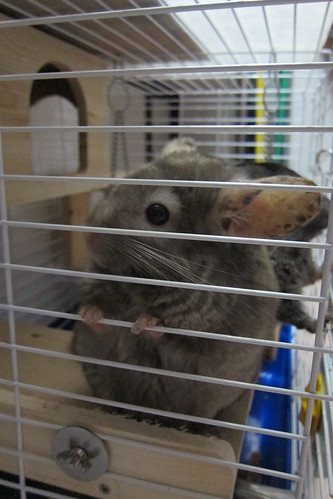

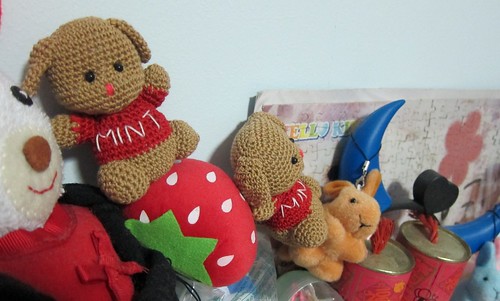
No comments:
Post a Comment